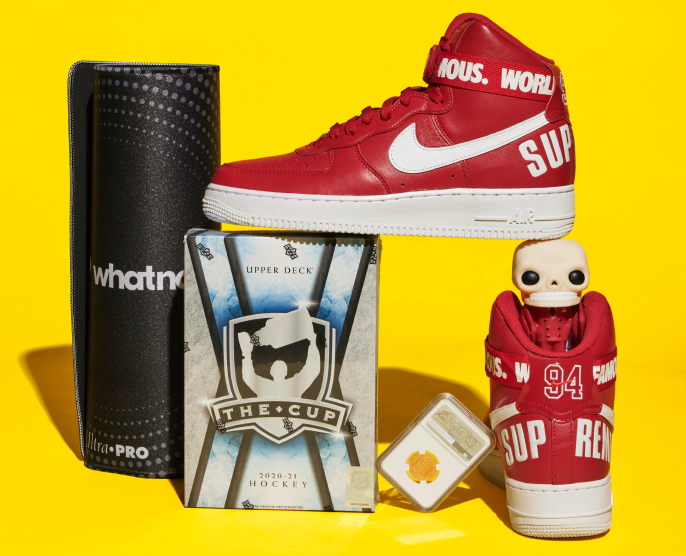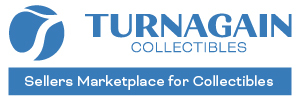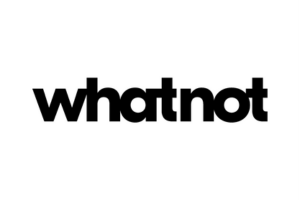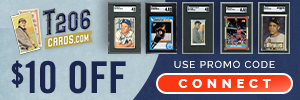
Creating a National Worthy of the National Pastime
I'm spending a few days this week the same way I've vowed to spend a few days every summer: at The National.
If you haven't been, it's an overwhelming experience for a collector of any level. Go, be merry, spend money, and celebrate the hobby at its greatest annual showcase.
But as I walk the more-than-ample aisle space with my lists, my backpack, some ogling, and a little (or maybe more) purchasing, I'll have other thoughts that coincide with my concerns about the future of the card and collectible industries.
The hobby deserves an annual national showcase that's worthy of its tremendous history. We're close to that, and getting closer, but we're not there yet.
We were in a much different place not so long ago. We are well beyond the days – thankfully, I'd argue – when fire marshals shut down The National in 1991, after investment-crazed "collectors" swarmed Anaheim.
Building up from the wreckage of the bust, I offer a few suggestions for the organizers of a National that has already had a remarkable three decades at our hobby's side.
Use the Stars for More Than Just Autograph Signings
Those of us fortunate enough to spend some time in Baltimore this week – and organizers are expecting 45,000 paid convention goers – will breathe a few molecules of the same air as Bob Gibson, Reggie Jackson, Johnny Bench, Frank and Brooks Robinson, Cal Ripken Jr., Gordie Howe, John Havlicek, Mike Tyson, Barry Sanders, and Mariano Rivera, to list just a few of the legends.
And guess what? You and I will not glimpse any of them unless we pony up serious cash (Seriously serious: $249 for any Rivera item, plus another $249 if you want a picture with a man who could, health permitting, appear at the next 40 or so Nationals).
TriStar, convention planners, and the players themselves should all be able to make a buck, or many thousands of bucks, out of our eagerness to collect pieces of their greatness.
But think of the missed opportunities in having this incredible collection of sports history cycling through one roof over the course of five days, and leaving them parked behind tables filled with Sharpies.
Think of the dream team panel discussions that could be put together. Let Jackson and Gibson talk hitting and pitching. Bench, Pete Rose, Joe Morgan and Tony Perez could reassemble the Machine for an hour.
I'm not suggesting free labor donated by the former athletes. But with some planning, we could surely purchase their services for another hour or so before they head back to the airport.
Would you pay to see Mike Tyson and Gordie Howe and Cal Ripken talk about what it's like to be at the top of their games – and then, not so much?
Would you tell your kids about the time you laid eyes on Bill Mazeroski and Carlton Fisk – celebrating Series game-winning homers always in our minds – in the actual flesh?
Open and Honest Discussions
I hate to break it to you but if you're camped out in your garage full of 1990 Donruss cases waiting out for your big payout, it's never going to happen. The hobby is actually facing some very big issues, though.
Let's use the National as a forum to talk about them. I know that we all want to, because we spend enough time on websites and discussion boards fretting about them, and bemoaning the trajectory of the hobby.
Kids aren't collecting like they need to in order to ensure future vitality of the industry. I'd like to hear from the card manufacturers and local store owners about what we're doing to help that.
The explosion in authentication companies has brought an explosion of questions. I'd like to find out why that Roberto Clemente that looked like a 7 got a 2 – plus the more important questions like how you really, really know whether something was signed by a particular someone a few decades ago.
What's it like bringing an attic find to auction? Heck, what's it like making an attic find?
How do we spread collecting fever, making it stronger for everyone? How do we uphold the integrity of the hobby? Let's talk about it.
Location, Location, Location
I freely stipulate that Cleveland rocks. The Cleveland I-X Center, smack in that hotbed of urban vitality that is the vicinity of Cleveland Hopkins Airport, most certainly does not.
We were in Cleveland for the 2009 National, and we’ll be back there in 2014, then again in 2018. The I-X Center, no doubt, is tremendous host for home and garden conventions. It should not, however, host The National.
Spaces like the I-X Center – and, to a slightly lesser extent, the Donald E. Stephens Convention Center in Rosemont, Ill., where we gathered last year and will be back next year and again in 2015 – are just that: spaces.
They have plenty of room for dealers to spread out, and for lines to queue up to wait an hour to have Dexter Manley scribble his name. But all it is is empty space – no day life, no night life, no sports vibe at all unless you want to take an overpriced cab to a baseball stadium.
Baltimore, actually, is an ideal venue. The 300,000 square feet of the Baltimore Convention Center stand in the heart of the Inner Harbor, just a few blocks from Camden Yards. It's terrific that convention organizers scrambled to bring The National back to Baltimore this year after a successful debut there in 2010.
Alas, shockingly, the Orioles are not in town. This should never, ever happen again.
Future conventions should build around major sporting events – maybe even go bigger and plan around All-Star games, where the fan fests are pale imitations, anyway.
Play out the contractual obligations. Then let's convene in places we want to be, when we're outside as well as inside the room.
Have Fun
Enough advice for convention organizers. This is a directive to attendees.
Let's remember what we do: We collect little pieces of history connected to sports. Sports are fun. Collecting is fun. If it's not, I don't want to see you in Baltimore.
Of course, it’s a business, and, of course, this is real money. But the connection we feel to this hobby is deeper than that. In many cases, it extends to a time in our personal histories where we didn't have a concept of what money really was.
So, dive into a dime box. Open some junk wax. Buy a pack of something kind of expensive but totally random. Visit a table that holds no interest to you, and talk to the dealer.
Do a pack redemption. Spend $20 or $50 on a bunch of stuff you'd never thought you'd buy. Negotiate, talk, learn something.
Let's create an atmosphere where any sports fan would feel welcome, not just a hardcore collector.
See you in Baltimore.
 | Making purchases through affiliate links can earn the site a commission |


































